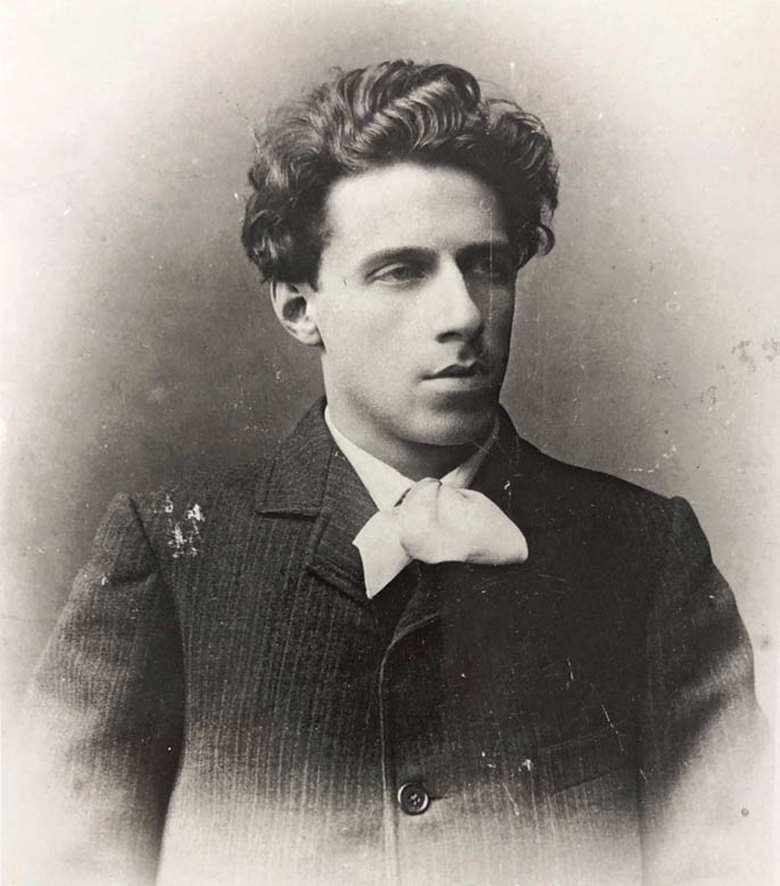Practitioner Focus: Vsevolod Meyerhold
Jonathan Pitches
Wednesday, May 1, 2019
An introduction to the work and theories of director and practitioner Vsevolod Meyerhold

Photo reproduced by kind permission of Robert Leach
Director and practitioner Vsevolod Meyerhold was born in Penza, Russia in 1874 and died in 1940 in Moscow, one of the many thousands of artists to fall victim to Stalin's death purges. He is best known for the landmark production of Gogol's Government Inspector (1926) and for his devising of the actor training system: biomechanics.
Influences
Meyerhold began his career under Stanislavsky at the turn of the twentieth century. Although he split from his mentor after just a few years and advocated a much more stylised and theatrical kind of theatre, he remained indebted to Stanislavsky, and was described by him as his ‘sole heir in the theatre’. Meyerhold borrowed from lots of different kinds of theatre, including the commedia dell’arte, futurism, symbolism and later in his career, in partnership with designers Stepanova and Popova, the revolutionary movement of constructivism. Often described as a dictator-director, Meyerhold was in fact a brilliant collaborator, working with musicians, set designers, and movement practitioners to produce his unmistakable style of theatre.
Key features of Meyerhold's theatre
- The emphasis is on the actor and the ensemble
- Physical plasticity and heightened expression are the hallmarks of his work
- Rhythm is fundamental
- The look of the work is carefully constructed, like painting a picture.
Themes
Meyerhold's theatre work was highly stylised. His actors were trained to use all the tools of the theatre, working together in tight ensembles and intuitively aware of one another, of the theatre space and, most importantly, of their audience.
Like Brecht, who was very influenced by his theatre, Meyerhold's work made no effort to conceal its own theatricality. It was a self-aware, non-illusory style of performance, which challenged its audiences to take a stance. A precursor to Epic theatre, Meyerhold's theatre also used episodic structures and montage to shock its audiences out of their comfort zone.
Exercise one – work with sticks
Using a prepared stick (1m long and 2cm thick), toss it up so that it spins through 180 degrees to catch it at the other end. Don't be tempted to move your hand up to catch the stick; let it arrive gently back into your palm, with the stick feeling ‘soft’. Practise a number of times making sure that the impetus for the throw is in your legs. Now, divide the actions of the throw into three:
- The ‘preparation’ for the throw or otkaz which like an upbeat in music should be counted: ‘and’
- the throw itself, the ‘action’ or posil, which can be counted: ‘one’
- the catching of the stick and the return to the starting point, known as the tochka, counted: ‘two’.
These are the basics of the three-fold biomechanical rhythm which underpins everything in Meyerhold's training.
Exercise two – work with balls
The essentials of the stick exercise can also be practised with tennis balls which have the added advantage of being more fun and less intimidating than a metre length stick. Standing on your own, throw the ball from your left hand to your right in an arc above your head. Count the ‘and’, ‘one, ‘two’ rhythm as you throw. Make sure you bring the ball (and yourself) under control at the end of the throw. Repeat, throwing the ball the other way.
Now, in a group, throw the ball across a circle. Exaggerate, at first, the preparation for the throw so you can see physically what an otkaz looks like. Freeze after the throw to visualise the tochka. Your partner can do the same in receiving the throw – ‘and’: preparation to catch, ‘one’: catch and ‘two’: freeze.
You're now both frozen: one of you in a gesture of throwing, the other in a gesture of catching. Imagine this is starting material for an improvisation based on the shapes created, or treat them as external clues for a character. Which kind of characters are ‘throwers’ and which ‘catchers’? Who has the higher status?
Improvising an étude
Meyerhold devised what he called études to help his actors understand the importance of rhythm. These études were simple acts like throwing a stone, broken down into separate parts, each performed with the otkaz, posil, tochka rhythm. Create a minute-long, solo étude of your own which conforms to these conventions. Think of an action: kicking the ball, for example. Break it down into fifteen or so smaller actions. Choreograph each sub-action with a sensitivity to the style of Meyerhold's theatre:
- use elongated, exaggerated gestures
- clearly express the otkaz, posil and tochka for each sub-action
- make sure the whole body is involved.
Memorise the work so that you can teach it to someone else. See how moving like this, with a conscious and deliberate rhythm, affects how you behave on stage.

